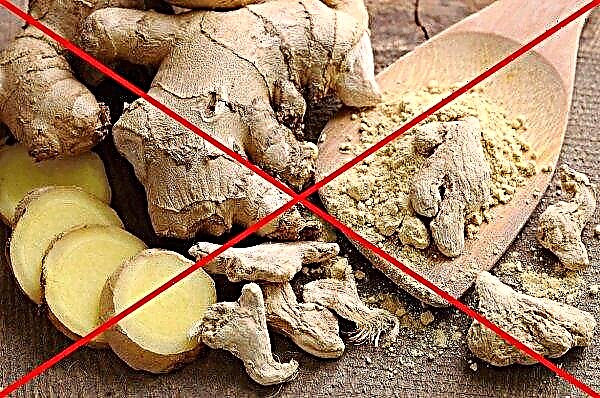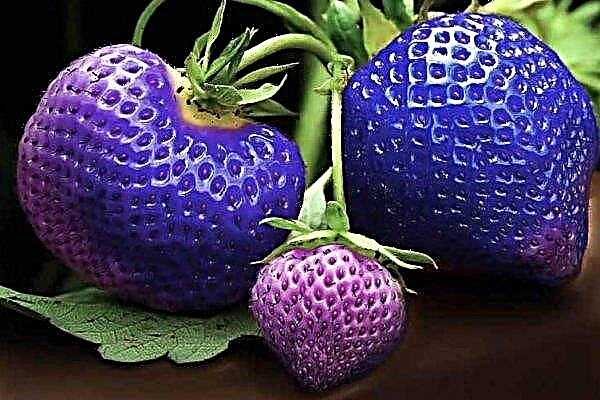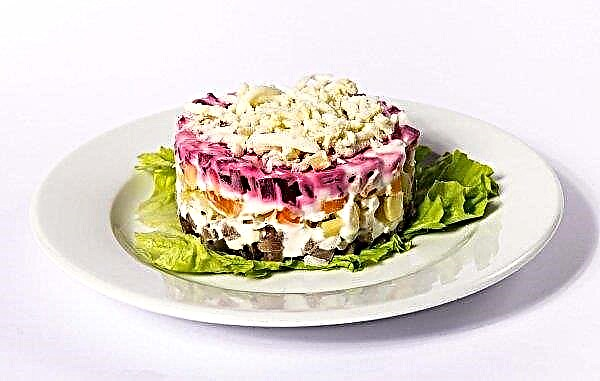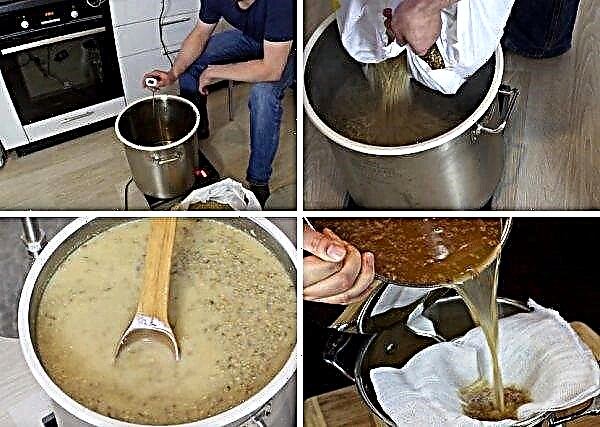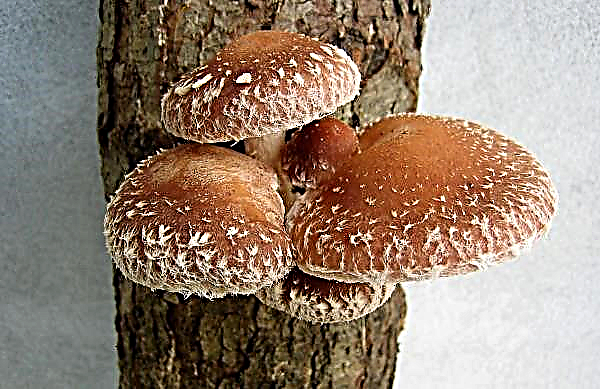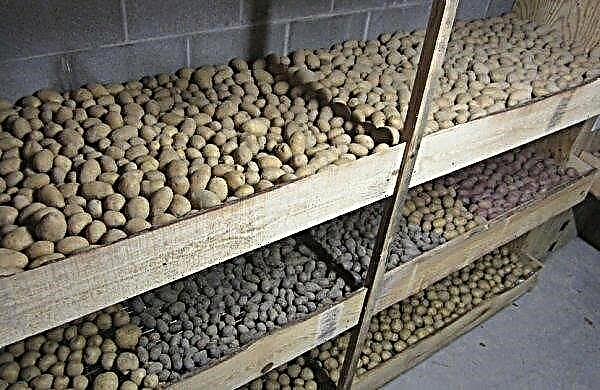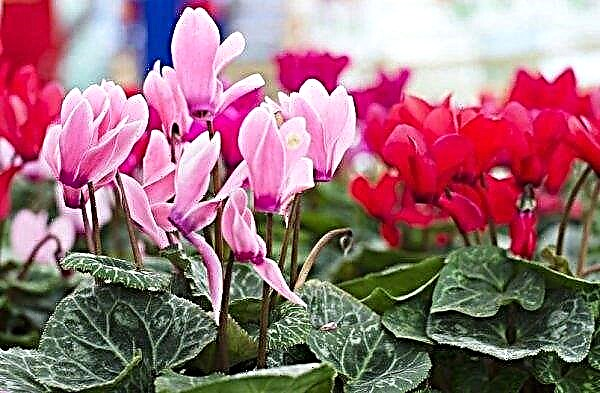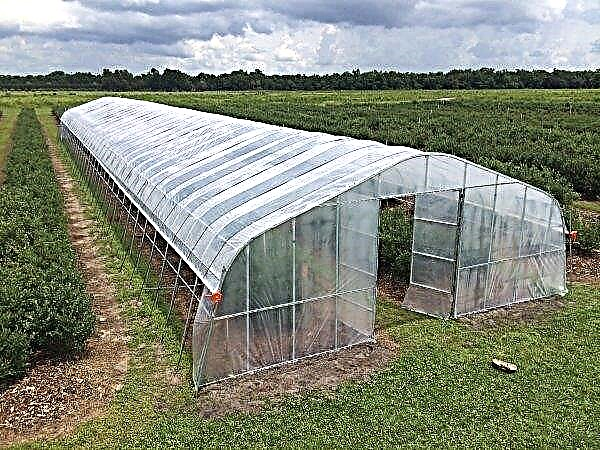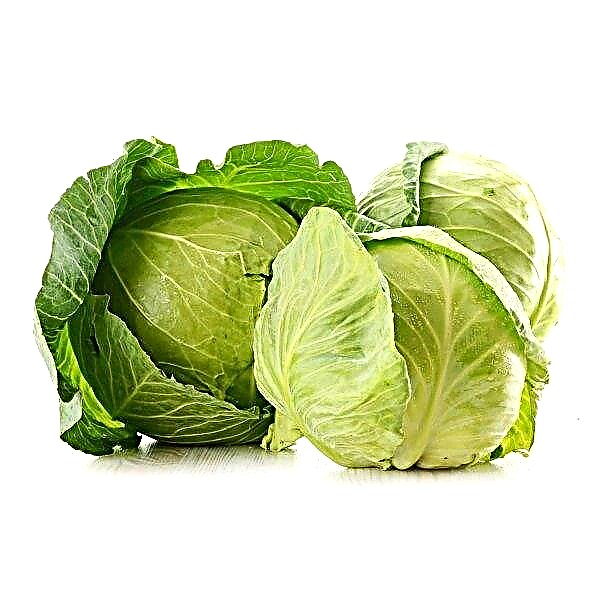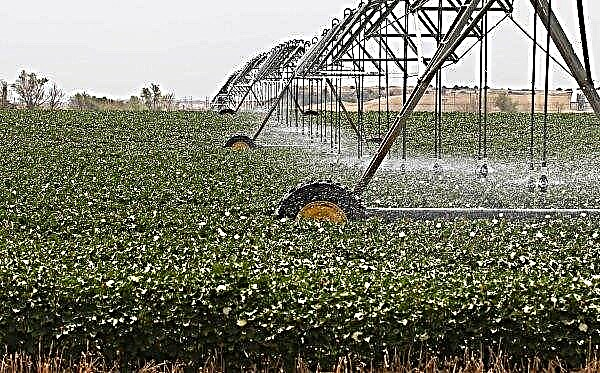Parsley variety The Italian giant is one of the most common varieties of foreign selection. Among its advantages are high yield, rich spicy aroma and rapid growth of green mass. About the features of the variety and its agricultural technology - read further in the article.
Description and characteristics of parsley Italian giant
The Italian giant is a mid-season plant with a strong aroma, sharper than that of curly varieties. The height of the plant reaches 0.9 m. The variety is great for use as a seasoning in soups and salads. This is one of the fastest growing types of this culture. In Italy and Greece, smooth-leaved parsley of the type such as the Italian giant is found in the wild. The culture grows even in rocky areas and has been used for culinary and medicinal purposes for many generations.
Characteristic varieties Italian giant:
- ripening period: 65–70 days;
- productivity: 2,8-3,4 kg / 1 m²;
- leaf rosette: semi-vertical, from 20–25 leaves, large;
- green mass of the outlet: 75–85 g;
- height: 0.6–0.9 m;
- stems: strong, thin, crowned with flat, deeply divided leaves;
- leaves: smooth, cirrus, triangular, tender;
- petiole: medium;
- umbrella: about 5 cm;
- seeds: ovate, oblong;
- color: dark green;
- aroma: tart.
Did you know? The largest parsley suppliers in the world — Canada, Spain, Germany, Belgium, Italy and Hungary.
The nutritional value
Parsley is one of the lowest calorie herbs. 100 g of fresh leaves contain a total of 36 kcal. They have no fat and zero cholesterol, and there are also many antioxidants, vitamins, minerals and fiber. The plant helps control blood cholesterol and can protect the body from free radicals.
100 g of leaf parsley contains:
- 6.33 g of carbohydrates, which is 5% of the daily allowance (RDA);
- 2.97 g of protein - 5% RDA;
- 0.8 g of fat - 3% RDA;
- 3.3 g of fiber - 8.5% RDA.
Important! Representatives of the umbelliferous family, including parsley, are far from safe. Spicy herbs should be used with caution during pregnancy, since when consumed in large quantities, it can cause miscarriage.
The mineral composition of parsley is quite diverse:
| Minerals | % of the daily rate | Volume (mg) |
| Iron | 21 | 3,7 |
| Potassium | 9 | 332 |
| Calcium | 8 | 82,8 |
| Magnesium | 7 | 30 |
| Manganese | 5 | 0,1 |
| Copper | 4 | 0,1 |
| Zinc | 4 | 0,6 |
| Phosphorus | 3 | 348 |
| Sodium | 1 | 33,6 |
The aroma of the plant is provided by the presence of essential oils and flavonoids in its composition. The vitamin composition of parsley is extremely rich.
| Vitamins | % of the daily rate | Volume (mg) |
| TO | 1366 | 1640 mcg |
| C (ascorbic acid) | 220 | 133 |
| B9 (folic acid) | 38 | 152 mcg |
| B3 (niacin) | 8 | 1,331 |
| B4 (Choline) | 8 | 7,7 |
| B5 (pantothenic acid) | 8 | 0,400 |
| B2 (riboflavin) | 7,5 | 0,098 |
| B1 (thiamine) | 7 | 0,086 |
| B6 (pyridoxine) | 7 | 0,090 |
Parsley yield
Parsley leaves are collected as necessary, cutting them from the outer edge of the outlet to the inside. You can immediately cut off the entire plant, just above ground level. After a while, it will grow again. In total, during the growing season from one plant you can collect about 200 g of greenery.
Seedlings
Shoots will appear 3-4 weeks after planting, so the seeds are sown in early spring. The Italian giant will develop well as soon as the danger of frost passes.
Sowing
Sowing can be done both in open ground and in a container on the windowsill. Since the crop can be harvested almost all year round, The following landing dates are distinguished:
- in spring - in April-May;
- in summer - at the end of July;
- in autumn - in October or November (winter sowing).
 Most gardeners sow seeds for seedlings to give plants an advantage in crop production speed. The room should have room temperature. The soil in the tank with seedlings should be evenly moist. Transplanted seedlings when the temperature in the street reaches + 15 ° C. The soil on the site should be moist, loamy. Before planting it is mixed with compost or other organic fertilizers. The site may be in the shade, but it should be periodically lit by the sun.
Most gardeners sow seeds for seedlings to give plants an advantage in crop production speed. The room should have room temperature. The soil in the tank with seedlings should be evenly moist. Transplanted seedlings when the temperature in the street reaches + 15 ° C. The soil on the site should be moist, loamy. Before planting it is mixed with compost or other organic fertilizers. The site may be in the shade, but it should be periodically lit by the sun.Important! If there are roses in the garden, planting parsley next to them will scare away pests, improve the health of rose bushes and enhance their aroma.
Frost resistance
The plant tolerates frosts to -7 ° C. In addition, the seeds under natural conditions winter well in the soil and germinate when optimal conditions for growth appear. And this makes it possible to plant parsley very early, for example, immediately after the snow has melted.
Advantages and disadvantages of the variety
- The advantages of parsley Italian giant are as follows:
- a large amount of green mass throughout the growing season;
- good taste;
- intense aroma;
- frost resistance and early ripening;
- unpretentiousness - the variety is not selective for soils and microclimate;
- resistance to fungal diseases.
- The fact that parsley can be sown several times during the season, increasing the overall yield, is also an advantage of the variety.
There are practically no shortcomings in this variety.
Did you know? Parsley is currently grown on many ships to improve and diversify the diet of sailors.
The basic rules of growing
Italian parsley varieties require moderate care. They do not grow very well in hot climates, and also poorly gain green mass if long frosty weather sets in on the street. The desired landing area should be with well-drained soil and plenty of organic matter in the ground.
If you are planting plants in a row, then between adjacent plants should be at least 30-40 cm to prevent mold on the leaves due to poor air circulation. If sowing is carried out with seeds, then the depth of seed placement is about 1 cm.
Video: growing parsley
Care Features
The main activities to care for the Italian giant:
- watering;
- loosening the soil and removing weeds;
- top dressing;
- pest control.
Important! Parsley has very small roots. They must not dry out. If moisture quickly leaves the soil, cover it with mulch materials. It will also help in weed control.
Loosening and weeding
Weeds grow everywhere and always. And parsley is a plant with a small root system, so weeds will compete with it in the fight for moisture and nutrients. To combat them, loosening after watering and manual or mechanical removal are used. Loosening is necessary to a depth of 4 cm, but so as not to damage the roots of parsley.
Watering
Parsley is drought tolerant. But it will be better if watering is carried out regularly - about once a week. Allow the soil to partially dry between waterings.
Top dressing
Before planting parsley, rotted manure or other organic matter is introduced into the soil. This will help to obtain a large volume of greenery. Fertilizers mix well with the soil at the planting site. In the second year of growth, the crop is fed in the early spring with balanced fertilizers. This is especially important if the plant looks weak and has few leaves.
Diseases and Pests
Parsley diseases are quite rare. Most pathogens infect foliage and only occasionally roots. Disease prevention begins with the right choice of place to grow, as well as with the selection of resistant varieties, which include the Italian giant. The sunny area stimulates the development of plants and makes them less vulnerable to disease. Good air circulation prevents mold and the spread of fungi.
The main diseases of parsley:
- Powdery mildew - a fungal disease that appears as a grayish powdery coating on the leaves. Appears at the end of summer in rainy and warm weather.
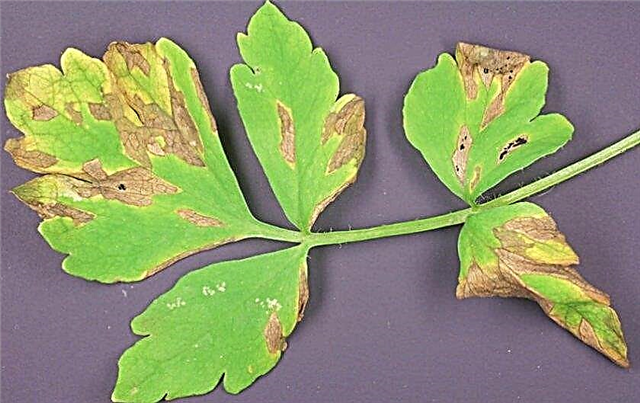
- Downy mildew (peronosporosis) - It affects plants in early summer, manifests itself in the form of yellowish spots. The spots on the underside of the leaf have a loose coating. Subsequently, they dry up and fall off.
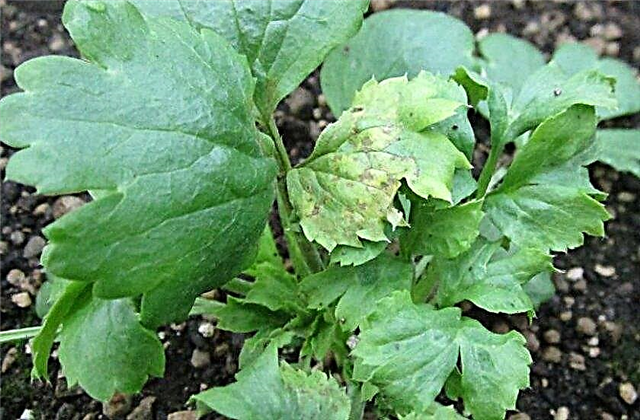
- White spotting - manifests itself in the form of dirty white spots on both sides of the sheet. Around the spots there is a characteristic brown border.

- Black rot - appears during the growth of young plants. It affects the root neck. It gets dark and begins to rot.
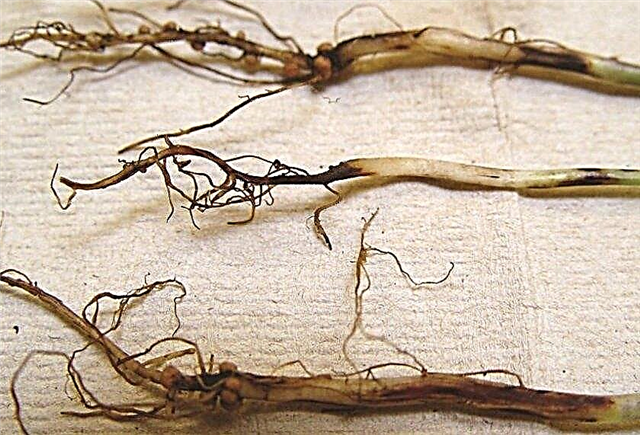
Fungal diseases are treated by spraying with copper-based solutions. Among them - 1% solution of Bordeaux liquid or 0.5% solution of copper sulfate.
Insects infect leaf parsley very rarely. The main pests are:
- Gourd aphids - small yellow-green insects that damage leaves. They live in colonies on the underside of leaves or stems.

- Leaf tree - a small insect similar to aphids both in the way of feeding and in the way of wrecking.
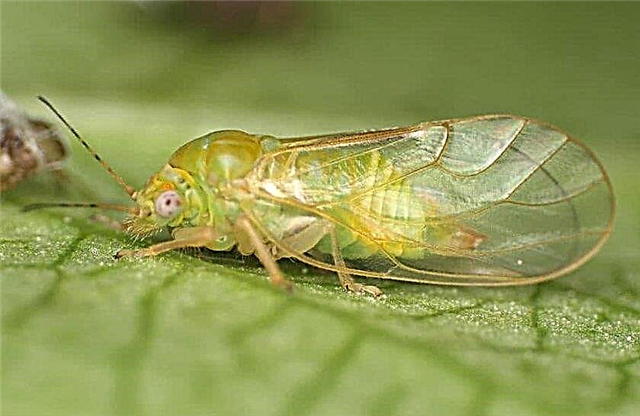
- Stem nematode - These are microscopic worms up to 0.5 mm long, which cause the stems to die. To combat them, they use soil treatment with boiling water before planting, and they also adhere to crop rotation rules.
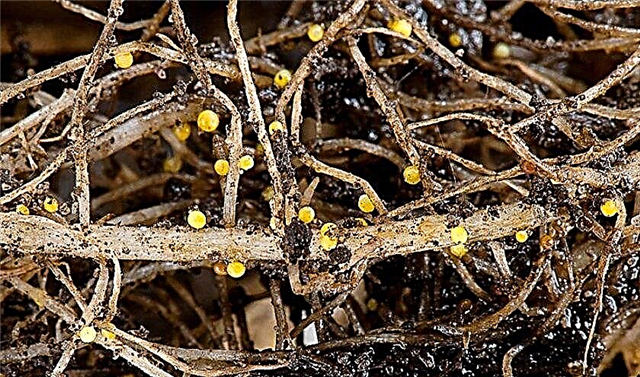
Harvesting and storage
The harvesting cycle for parsley differs by year. In the first year, it forms a leaf rosette, and greenery is cut from it during the entire growing season. The total volume of green mass from one plant is up to 200-300 g. Usually the outer leaves are cut, and the inner leaves are left so that the plant can continue to grow. Harvested crops are used immediately or frozen for later winter use. In the second year of leaves on these outlets will be very few. They are used as food. But the growth goal of the second year is the appearance of peduncles. Seeds will be collected from them for planting next spring. In the autumn of the same year, parsley roots are harvested. They can be used in salads, due to the rich taste.
In the second year of leaves on these outlets will be very few. They are used as food. But the growth goal of the second year is the appearance of peduncles. Seeds will be collected from them for planting next spring. In the autumn of the same year, parsley roots are harvested. They can be used in salads, due to the rich taste.
Growing parsley The Italian giant does not require much effort or knowledge. It is enough to adhere to the simplest growing rules to get a generous crop of fragrant greens.








